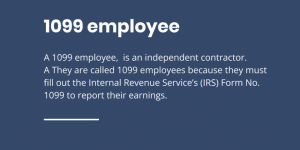Updated October 13, 2025
Are Employers Liable for Harassment in California?
Have you ever felt uncomfortable, threatened, or degraded by someone’s words or actions at work? Workplace sexual harassment affects millions of Americans, creating hostile environments where productivity suffers and psychological damage can be severe.
California workplace harassment affects thousands of employees each year, leaving many uncertain about their rights and how to prove their cases. Unfortunately, only 35% of harassment victims formally report these incidents, often due to fear of retaliation or uncertainty about the legal process.
California employment law provides robust protections against workplace harassment, but proving your case requires specific evidence and understanding of legal standards. In fact, employers can be held strictly liable for harassment by supervisors, though different standards apply when the perpetrators are coworkers or third parties.
Despite strong legal protections, many victims struggle to document harassment effectively. Keeping detailed records, gathering witness statements, and properly filing complaints are crucial steps that can significantly strengthen your case.
This comprehensive guide will walk you through exactly what qualifies as workplace harassment in California, how employer liability works, and the specific evidence you need to build a compelling legal case. Whether you're currently experiencing harassment or want to understand your rights, this updated legal roadmap provides the essential information you need to protect yourself and seek justice.
What Counts as Workplace Harassment in California
Under California employment law, workplace harassment extends far beyond occasional rude comments or isolated disagreements. The Fair Employment and Housing Act (FEHA) provides comprehensive protections against harassment based on protected characteristics. Understanding what legally qualifies as harassment is essential for employees seeking to protect their rights.
Verbal, physical, and sexual harassment
Workplace harassment in California encompasses various forms of misconduct that create a hostile, intimidating, or offensive work environment. For behavior to be legally actionable, it must be unwelcome, based on a protected characteristic, and either severe or pervasive enough that a reasonable person would find it abusive.
Verbal harassment includes derogatory comments, offensive jokes, slurs, epithets, and name-calling targeting protected characteristics. This category also covers threats, intimidating language, and malicious rumors that undermine an employee's dignity or create a hostile environment.
Physical harassment involves unwanted touching, physical assault, blocking someone's path, or interfering with normal movement. Even subtle actions like repeatedly brushing against someone can constitute harassment if unwelcome and based on a protected category.
Sexual harassment specifically refers to unwelcome sexual advances, requests for sexual favors, and visual, verbal, or physical conduct of a sexual nature. Importantly, under California law, the offensive conduct need not be motivated by sexual desire but may be based on an employee's actual or perceived sex, gender identity, sexual orientation, pregnancy, or related medical conditions [1].
Cyberbullying and digital misconduct
As workplaces increasingly rely on digital communication, harassment has evolved beyond face-to-face interactions. Digital harassment refers to unwelcome conduct occurring through electronic means—such as emails, messaging apps, social media, or text messages.
Examples include:
- Sexually suggestive emails or texts from coworkers, managers, or clients
- Offensive memes or jokes shared in workplace chat platforms
- Unwanted social media messages of a sexual or inappropriate nature
- Tagging or commenting about someone in a harassing manner
- Sending explicit images or content to work accounts [2]
Digital harassment is particularly damaging because it can occur 24/7, extending well beyond the physical workspace, with the possibility of individuals being targeted anytime and anywhere [3]. Additionally, the anonymity afforded by digital platforms can amplify the harm by adding to feelings of helplessness in targets.
Retaliation after reporting
California law explicitly prohibits employers from retaliating against employees who report harassment, file complaints, or participate in investigations. These anti-retaliation provisions apply regardless of whether the underlying harassment claim is ultimately substantiated [4].
Retaliation can take obvious forms like termination or demotion, or more subtle actions such as unfavorable schedule changes, exclusion from meetings, increased scrutiny, relocation to less desirable workspaces, or social ostracism orchestrated by management [4]. Furthermore, effective January 1, 2024, new legislation creates a presumption of retaliation if an employer takes adverse action against an employee within 90 days of the employee engaging in protected activity [5].
The consequences for employers who engage in retaliation are serious—they may be liable for a civil penalty of $10,000 per employee per violation [5]. Hence, understanding what constitutes retaliation is crucial for both employees asserting their rights and employers developing compliant policies.
Understanding Employer Liability
Employer liability in California workplace harassment cases varies significantly based on who commits the harassment. California employment law establishes different standards of responsibility depending on whether the harasser is a supervisor, coworker, or third party.
Strict liability for supervisors
When a supervisor engages in harassment, California law imposes strict liability on employers. This legal standard means the employer is automatically responsible for the supervisor's harassing conduct, even if management was completely unaware of the behavior [6]. Essentially, the employer cannot escape liability by claiming ignorance or by pointing to anti-harassment policies they may have implemented.
California defines a "supervisor" broadly as any individual with authority to hire, transfer, suspend, lay off, recall, promote, discharge, assign, reward, or discipline other employees [7]. Importantly, this definition extends to anyone who directs employees' work activities or adjusts grievances, provided they exercise independent judgment rather than merely performing routine or clerical tasks [7].
Courts have consistently upheld that an employer bears full responsibility when supervisors abuse their authority through harassment. According to California Government Code §12940(j)(1), this liability applies regardless of the employer's lack of knowledge or attempts to remedy the situation [7].
Negligence standard for coworkers
In contrast to the strict liability standard for supervisors, employer responsibility for harassment by non-supervisory coworkers follows a negligence standard. Under this framework, an employer becomes liable only when:
- The employer knew or should have known about the harassment, and
- The employer failed to take immediate and appropriate corrective action [8]
This means employees must generally report coworker harassment through proper channels. Subsequently, the employer's response becomes crucial—they must investigate promptly and take appropriate steps to stop the harassment. Failure to do so creates employer liability.
A recent California appellate court decision, Kruitbosch v. Bakersfield Recovery Services, clarified that off-site, off-duty harassment by coworkers must be "work-related" for employer liability [9]. Nevertheless, even if the original harassment occurred outside work contexts, an employer's inadequate response to a complaint can independently create a hostile work environment claim [10].
Liability for third parties like clients or vendors
Employers may likewise be held responsible for harassment committed by non-employees such as clients, customers, or vendors. The standard resembles that for coworker harassment—employers must take reasonable steps to prevent and promptly address harassment by third parties when they know or should know it is occurring [11].
Recognizing the employer's legal duty to provide a harassment-free workplace extends beyond controlling employee behavior. When an employee reports harassment by a client or vendor, the employer must investigate and take appropriate action, which might include:
- Speaking directly with the third party about the conduct
- Changing the employee's work assignment to limit contact
- In serious cases, terminating the business relationship [12]
Courts have established that employers cannot simply ignore harassment from customers or other third parties [11]. With respect to potential liability, the employer's response to complaints becomes the critical factor, as does whether the employer took reasonable preventative measures to protect employees.
For California employees, understanding these liability standards provides essential context for determining how to report harassment and hold the appropriate parties accountable under the law.
How to Prove Workplace Harassment
Building a strong California workplace harassment case depends on your ability to collect and preserve compelling evidence. The right documentation transforms a claim from "he said, she said" into a demonstrable pattern of misconduct that employers and courts cannot easily dismiss.
Documenting incidents and patterns
Meticulous record-keeping forms the foundation of any successful harassment case. Initially, create a dedicated journal—either physical or digital—where you document each incident immediately after it occurs [13]. For each entry, include:
- Date, time, and location of the incident
- Detailed description of what happened or what was said
- Names of the harasser(s) and any witnesses present
- How the incident affected your work performance or emotional wellbeing
Documenting incidents promptly after they occur ensures accuracy and prevents important details from fading with time [14]. Moreover, consistent documentation helps establish patterns of behavior, which is often crucial in harassment cases where a single incident might not rise to the level of legal violation [15].
Gathering witness statements
Witness testimony can dramatically strengthen your case by providing independent verification of harassment incidents. Identify coworkers who observed the harassment or experienced similar treatment [16]. Upon identifying potential witnesses, respectfully ask if they would be willing to provide a written statement detailing what they witnessed [17].
Witness statements should include specific details about what they saw or heard, including direct quotes whenever possible [17]. In California, witnesses who testify about discrimination or harassment receive protection against employer retaliation under Labor Code §1102.5 [16].
Saving emails, texts, and digital evidence
Electronic communications often provide the most compelling evidence in harassment cases. Preserve all relevant digital content, including:
- Emails containing inappropriate language or harassment
- Text messages, chat logs, and social media communications
- Screenshots of offensive content before it can be deleted
- Digital meeting recordings (where legally permitted)
To properly preserve digital evidence, save copies outside your work accounts—through screenshots, PDF conversions, or secure cloud storage [18]. Importantly, exercise caution when forwarding work emails to personal accounts, as this might violate company policies [19]. An alternative approach involves creating properly named folders on company servers that document the evidence path [19].
Filing internal complaints properly
Prior to pursuing legal action, following your employer's complaint procedure is typically necessary. Before filing:
- Review your employee handbook for specific reporting procedures
- Submit your complaint in writing, keeping a personal copy [20]
- Include detailed information about incidents with supporting evidence
- Maintain records of when you reported and to whom [13]
Following company procedures creates an official record demonstrating you attempted to resolve the issue internally [15]. This documentation becomes critical evidence if your employer fails to take appropriate action, as California employers can be liable when they knew or should have known about harassment but failed to intervene [21].
When Employers May Not Be Liable
While California employment law provides strong protections against workplace harassment, certain exceptions exist where employers may avoid liability. Understanding these exceptions is vital for both employees seeking justice and employers establishing proper defenses.
If they took prompt corrective action
Although employers are typically responsible for harassment in the workplace, they can escape liability through prompt remedial action that effectively addresses the harassment. For an employer's response to be considered sufficient, it must be:
- Initiated immediately upon learning of the harassment
- Reasonably calculated to end the harassing behavior
- Effective in preventing further misconduct
Courts have consistently recognized that employers who respond quickly to complaints demonstrate their commitment to maintaining a harassment-free environment. In one notable case, a court dismissed a harassment claim because the employer moved the complainant away from the alleged harasser within days of receiving the complaint and initiated an investigation, coupled with corrective measures.
The standard isn't perfection—employers don't need to impose the harshest possible penalty to satisfy this defense. Instead, the remedial action must simply be reasonably designed to prevent further harassment from occurring.
If they had no knowledge and no reason to know
For harassment by coworkers or third parties (not supervisors), employers may avoid liability if they can demonstrate they had no knowledge of the misconduct and no reasonable way of discovering it. This "knew or should have known" standard differs significantly from supervisor harassment, where strict liability applies regardless of knowledge.
Typically, an employer successfully establishes this defense when an employee fails to report harassment through available channels and no management personnel witnessed or had reason to suspect the behavior. However, constructive knowledge can still create liability—meaning employers might be responsible if the harassment was so pervasive that management should reasonably have been aware.
If the behavior wasn't based on a protected category
Perhaps the most fundamental defense is that the behavior, though unprofessional or unpleasant, wasn't directed at the employee because of a protected characteristic. California law specifically prohibits harassment based on protected categories including race, religion, gender, sexual orientation, age, disability, and other legally protected statuses.
Workplace bullying or general incivility, while distasteful, may not constitute illegal harassment unless motivated by or targeting a protected characteristic. Throughout litigation, employers often argue that negative treatment stemmed from personality conflicts or performance issues rather than discriminatory animus.
Ultimately, these defenses highlight why properly documenting harassment is crucial—employees must clearly establish both the nature and basis of the harassment to overcome potential employer defenses.
Legal Options and Compensation
Pursuing justice for workplace harassment in California requires understanding the formal procedures and potential compensation available to victims. After documenting evidence and determining employer liability, you'll need to navigate the official complaint process and evaluate your options for financial recovery.
Filing a DFEH or EEOC complaint
California law mandates filing an administrative complaint with the California Civil Rights Department (CRD, formerly DFEH) before pursuing a lawsuit [22]. This critical first step must occur within three years of the last harassment incident [23]. Upon submission, you can either:
- Request an immediate "right-to-sue" notice and bypass the agency investigation
- Allow the CRD to investigate your complaint fully
Although filing with the CRD is required, you may simultaneously file with the federal Equal Employment Opportunity Commission (EEOC) through a process called "cross-filing" [24]. Once you receive a right-to-sue notice, you have one year to initiate your lawsuit in civil court [23].
Types of damages you can recover
Successful workplace harassment claims may yield several forms of compensation:
- Economic damages – Including lost wages, unpaid bonuses, forfeited benefits, and medical expenses [25]
- Non-economic damages – Compensation for emotional distress, pain and suffering, and loss of enjoyment of life [26]
- Punitive damages – Additional penalties awarded in cases involving malicious or reckless employer conduct [27]
- Attorney's fees and costs – Reimbursement for legal expenses incurred during the claims process [25]
Notably, California places no statutory caps on compensation amounts, unlike federal law [28].
When to consult an employment lawyer
Experts recommend consulting an employment attorney as soon as you believe your rights have been violated and internal remedies aren't forthcoming [29]. Before meeting with counsel, gather supporting documentation like:
- Communications from your employer
- Your employment contract and company handbook
- Evidence of harassment incidents
- Witness statements
An experienced attorney can evaluate whether your employer violated the law, determine the strength of your case, and guide you through administrative complaints or civil litigation [1].
Conclusion
Workplace harassment can devastate your career and wellbeing, yet understanding your legal rights empowers you to protect yourself effectively. California law offers some of the strongest workplace harassment protections nationwide, though the burden still falls on employees to document incidents properly.
First and foremost, recognizing what legally constitutes harassment forms the foundation of any successful case. Whether facing verbal misconduct, physical intimidation, sexual advances, or digital harassment, your ability to prove these incidents determines your case outcome. Additionally, employer liability varies significantly depending on whether the harasser is a supervisor, coworker, or third party.
Documentation remains your most powerful tool against workplace harassment. Detailed records of incidents, witness statements, preserved digital communications, and properly filed complaints create the evidence foundation necessary for legal action. Without this systematic approach, cases often devolve into difficult-to-prove scenarios where employers can more easily escape accountability.
Despite strong legal protections, employers may avoid liability under specific circumstances – particularly when they take immediate corrective action or genuinely lack knowledge of non-supervisory harassment. Therefore, reporting incidents through proper channels becomes essential both for stopping the behavior and preserving your legal rights.
Ultimately, workplace harassment victims have clear legal pathways through CRD/EEOC complaints and potential civil litigation. The compensation available can address both economic losses and emotional suffering, though navigating this complex legal landscape often requires professional guidance. Armed with knowledge about what constitutes harassment, how to document incidents, and what legal options exist, California employees stand better equipped to assert their right to a harassment-free workplace.
Above all, trust your instincts and advocate for the respectful treatment you deserve. Sexual harassment thrives in silence, but knowledge empowers survivors to break that silence effectively and safely. No employee should endure harassment as a condition of earning a living, and each person who stands up against it helps create safer workplaces for everyone.
If you need workplace harassment litigation, please call Setyan Law at (213)-618-3655. Free consultation.






